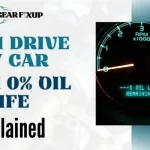Do you remember ever seeing an A-shaped button inside your car? The button controls the engine’s start-stop function. Is there a purpose to this button?
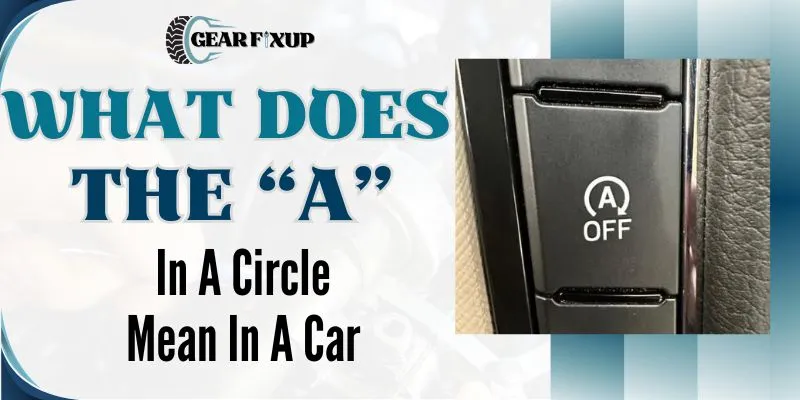
You can accomplish many things with the ‘A’ button on a circle button control in this article.
What Does the A in a Circle Mean in a Car?
On many modern cars’ dashboards, the A in a circle symbol stands for the engine stop/start button (also known as an idle stop/start system).
ESS — Engine Stop/Start System — activates when this switch is pressed. In this system, the engine is turned off automatically when idling, such as in traffic or at an intersection, to reduce fuel consumption.
You can then press the accelerator pedal to restart the engine, allowing you to keep your car stationary without allowing your engine to run unnecessarily.
However, you can deactivate Idle Stop/Start technology with the push of a button if you don’t wish to use it all the time—or if you prefer your engine to operate at stops.
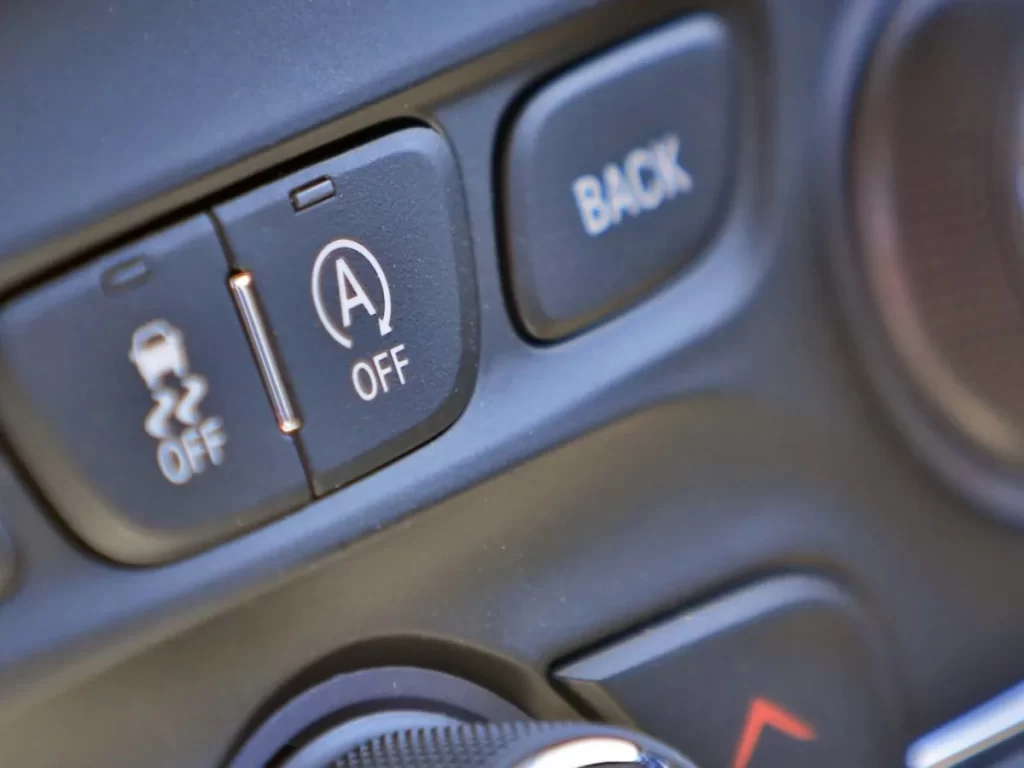
Where is The A In A Circle Button Button Located?
A symbol resembling two circles side by side with the word ‘Eco’ is usually indicated on the icon next to the gas pedal control button (on most cars with ESS systems).
ESS can be temporarily disabled by holding down one of these buttons while your vehicle is stopped.
How Does The Engine Stop-Start Button Work?
You can conveniently shut down your car engine with the engine stop-start button without having to touch the car or intervene manually. This article explains how a modern stop-start button works and how it transforms driving into something safer and greener.
A stop-start button on the car’s engine can cause a surprising amount of complexity, but it is ultimately straightforward to understand what happens.
In the beginning, sensors in the car detect any hindrance that prevents a quick restart when the driver presses the stop/start button. The position of the driver’s seat belt, the temperature of the automatic transmission oil, and the use of the air conditioner are all listed here.
You may read more about What Does The ASC System Service Required Light Mean?
If something goes wrong when starting or re-starting a car, these safety features protect drivers from potentially hazardous accidents.
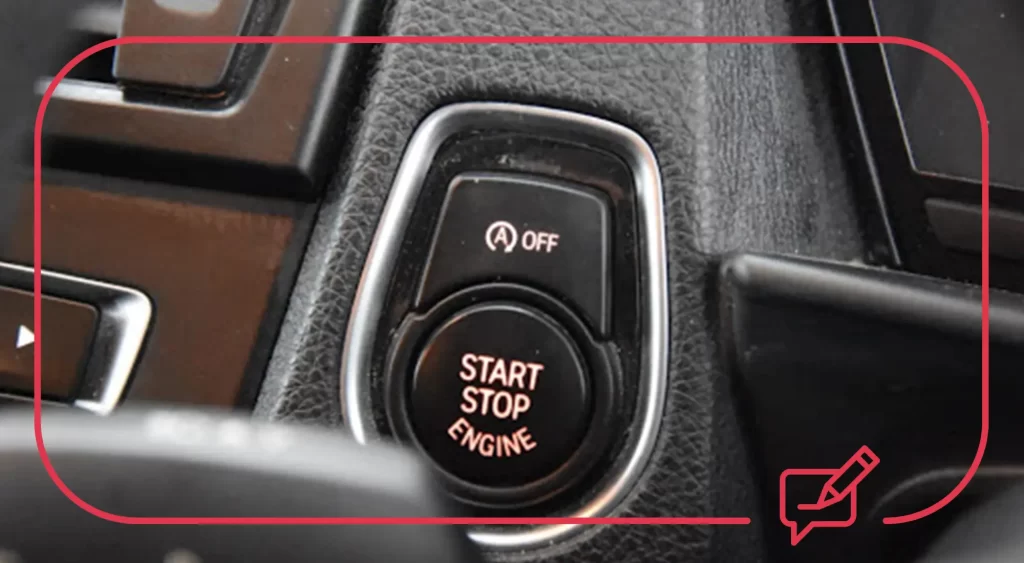
In addition, while you are stopped, the computerized control unit rapidly removes power from electrical components such as the lights and infotainment systems and performs some minor hot stops in order to conserve some electricity.
The settings of other secondary functions (such as climate control) will be maintained until the car is restarted.
After all these conditions are met, the fuel valve closes, thereby cutting off the fuel supply to the engine cylinders for a temporary period.
The start/stop button is pressed when you are ready to start your car again after meeting these parameters – a starter motor engages and cranks up compression in the cylinders and provides the energy necessary for combustion, enabling your engine to start automatically without any manual intervention.
The engine then ignites by itself after cylinder chambers are filled with gasoline after all this is successfully achieved.
Read more about What Does Cruise Main Mean In A Car? Explained
By using this seamless process, people won’t have to turn their keys continuously every time a traffic light turns red or take longer at parking spots when mall hours end.
Moreover, thanks to engineering advances around automobile industry today, this technology reduces CO2 emissions as well.
Engine Stop-Start Button Lights
In the circle with an A, how many different lights are illuminated?
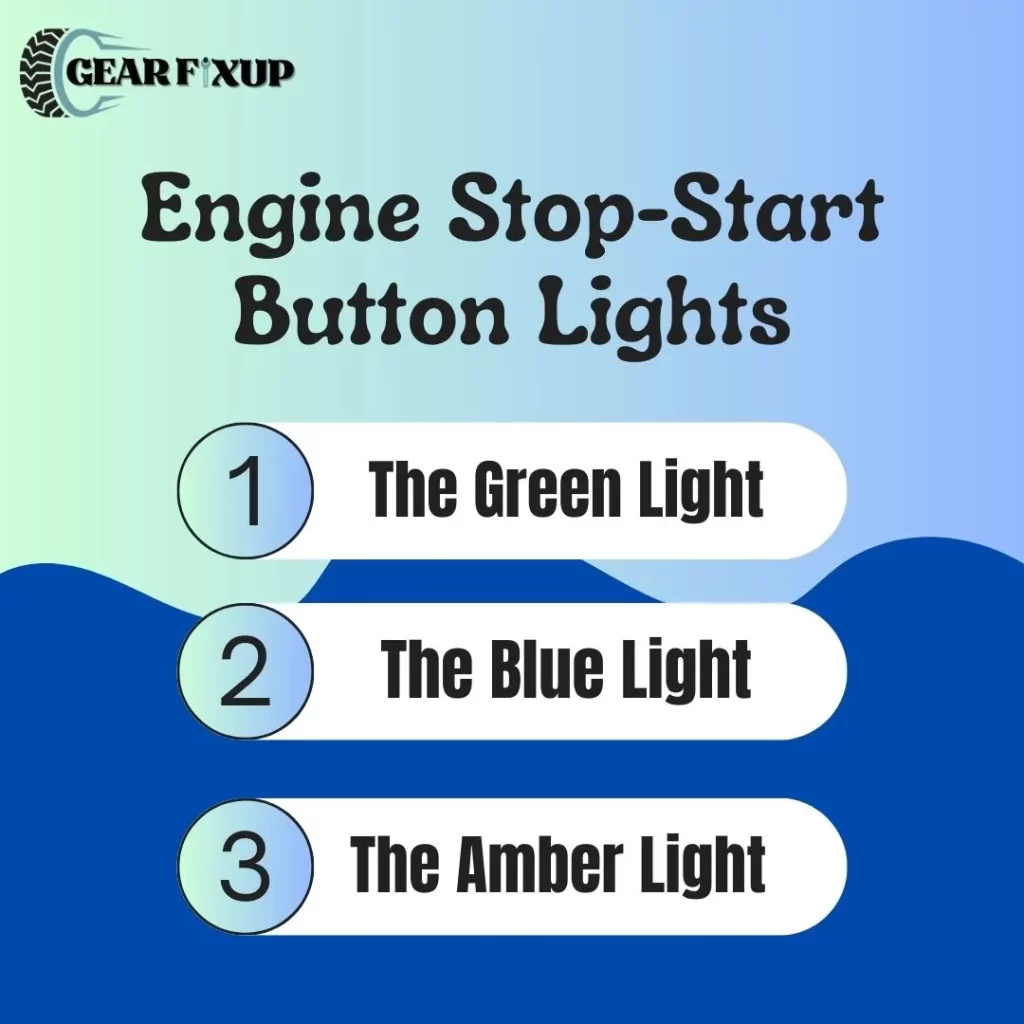
I am going to explain what each color of the engine stop-start light means in order to remove any confusion.
The Green Light
In most cases, a green engine stop-start light indicates that the system is operating. The engine will automatically switch off when your vehicle stops (such as at traffic lights or in heavy traffic) and then turn back on once the brake pedal is released. By eliminating the need to manually turn the ignition key or press any buttons, you can save fuel and lower emissions while also providing a smoother start.
Read more about What Does Depress A Brake Pedal Mean? Explained
The Blue Light
When ECO mode is enabled, a blue light appears. A low throttle input is one of the conditions that will cause your engine to turn off when this mode is activated.
If you select manual transmission or automatic transmission, hydraulic brakes or electric brakes, etc., you may be able to turn this on or off in your trip computer settings menu.
The Amber Light
Amber codes indicate a disabled system which will be inactive until reactivated. The feature is normally built into most cars so that it can be turned off quickly when needed.
If the battery in your car is low and you need additional juice to start the engine when driving uphill for an extra boost during a hill-start assist maneuver.
An amber warning light should appear as soon as you disable this feature manually (by pressing a button) to remind you that it’s been disabled.
Engine Stop-Start Issues
In order to spot signs of engine stop-start malfunction, here’s what you need to look for:
Unable to activate feature intermittently
Wiring harnesses and sensors can malfunction if your ESS system doesn’t turn on at all, or only occasionally does.
It’s vital to have any slight mistake in the activation of the ESS system checked out as soon as possible to avoid more serious problems.
Engine shuts off before stopping
If the engine stops before coming to a complete stop, this is another sign that there may be a problem with the ESS system.
For the engine to remain running after you have completely stopped, you may be required to keep pushing the gas pedal slightly even after coming to a complete stop.
If your ESS system activates/deactivates depending on incorrect thresholds, this will require a professional diagnosis and correction.
Stopping/restarting uneven transmission
A problem with one of the sensor systems within your ESS system or something else directly related to the internals of your transmission may require diagnosis & maintenance if your transmission shifts unevenly after stopping & starting up more frequently than normal.
It is important to investigate further if this occurs regularly since abnormal drivetrain vibrations can severely damage components if they occur at idle.
Stuttering or shuddering
The problem could be triggered by a number of issues, including a faulty ignition spark plug, throttle body effect, or Stop-Start sensors. In the event that your vehicle experiences any engine shuddering, you should take it to an auto repair shop as soon as possible.
Check Engine Light Illumination
Your check engine light will illuminate if a fault code is detected concerning a component connected to stop-start technology. Your mechanic should be consulted in this case as soon as possible for further diagnostics and repairs.
Fuel Efficiency Loss
In addition, if you seem to be getting lower fuel mileage than you should from your vehicle, it might be a sign that your Automatic Engine Stop–Start System is not working correctly. As a result of a malfunctioning system, your car will burn fuel inefficiently and cleanly, leading to significant gas mileage reductions.
Start-Up Time Isn’t Reduced
When the vehicle idles at intersections or in other situations where automatic stop-start would be expected to kick in, you might notice that there’s no noticeable reduction in start-up times. This may indicate an issue with the system that needs immediate repair.
Keep an eye out for any of these symptoms of potential Engine Stop-Start Feature malfunctions. The key to preventing them from becoming major problems is to address them early!
Engine Stop-Start Feature Not Working: How to Solve?
Check out these tips for fixing your vehicle’s engine start-stop feature if it’s not functioning.
Plugs and wires must be checked
Spark plugs and ignition wires are also important components of this system. For the system to perform optimally and reliably, they need to be in good condition.
Regular maintenance should include periodic inspections of these parts by a qualified mechanic if you haven’t already.
Check Your Engine’s Idle Quality
It is also possible for poor idle quality due to a vacuum leak or other mechanical issues to cause problems with your vehicle’s engine stop-start feature.
Ensure that your mechanic checks for any idle-related issues before trying to fix your car’s engine stop-start problem further using any further repairs. Bad idling can influence how quickly your car starts within an acceptable range of time.
Clean the Starter Motor
A dirty or grimy starter motor contact could also cause ESS malfunction. Use rubbing alcohol to clean off any remaining residue or dirt around the starter and its contacts before trying again.
Check The Battery
You should check your car’s battery first if you are experiencing problems with its engine stop-start feature. It’s possible to have problems with the starting feature if the battery is bad or worn out because it may be unable to provide enough power.
Check the Fuses
A blown fuse may be responsible for a malfunctioning engine stop-start (ESS). You should replace any faulty fuses that appear in the vehicle – these are typically labeled “starting and charging system” or “stop/start system” – on a regular basis.
Brake pedal sensor test
This system relies on a brake pedal sensor, which has to be adjusted to detect when you release the brakes. When it is out of tune, it will not be able to detect when you release the brakes. If you want the engine stop-start feature to work correctly, you need to make sure this part is functioning correctly.
Take a look at the computer system in your vehicle
In addition, don’t forget to look into any software updates offered by your dealer or service center, which can improve the performance of your car.
Depending on the type of vehicle, a technician may also recommend specific computer programs that are specifically designed to enhance certain vehicle features like the gasoline/diesel control system, exhaust system, and other components related to fuel efficiency and emission reduction capabilities enabled by the actual system.
How Should I Turn Off the Stop-Start?
Most vehicles with Stop-Start systems are configured to use this feature by default to reduce fuel consumption and emissions. However, there may be times when you find it more convenient or more secure to temporarily disable the feature. Here are a few examples:
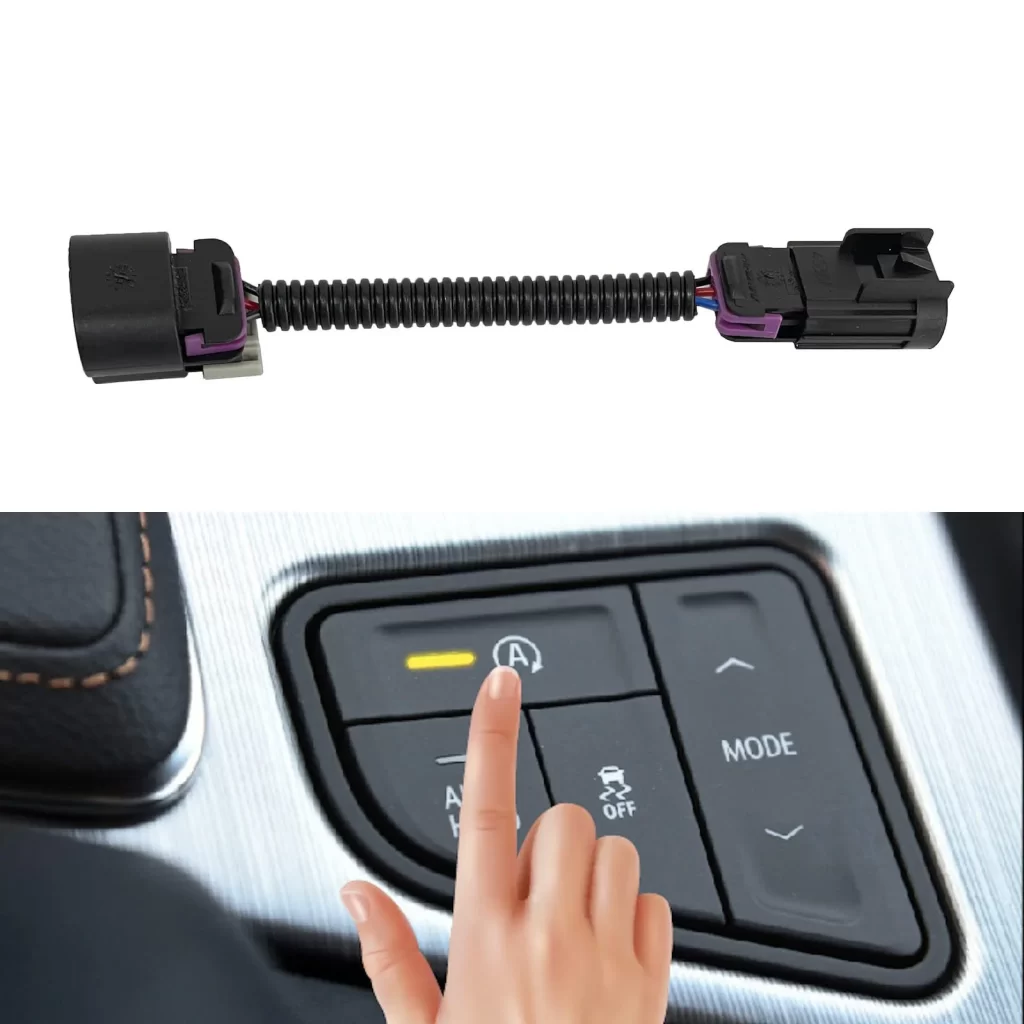
Transporting heavy loads
Stop-Start should be disabled when towing or carrying a trailer. By doing so, the engine and transmission will remain consistent in power.
Don’t Like It?
Some drivers might find the frequent engine starting and stopping annoying, even though the Stop-Start system is meant to conserve fuel.
Maintenance or charging of batteries
In the case of low batteries or new batteries, temporarily deactivating the Stop-Start feature may be beneficial. It prevents additional strain on the new battery by ensuring that the battery is fully charged.
Climate Extremes
Because the climate control system puts extra strain on the engine in extreme temperatures, the Stop-Start feature may not work as well. In slippery or icy conditions, the engine may also be better left running for better vehicle control.
Challenging terrain or off-road
You can get a smoother and more consistent ride if you turn off the Stop-Start feature when driving on bumpy or uneven roads.
What Are The Benefits Of The Engine Stop-Start Button In A Car?
On many modern cars, there is an engine stop-start button. By pressing the starter button or turning the key, the driver is able to quickly stop and restart their car’s engine.
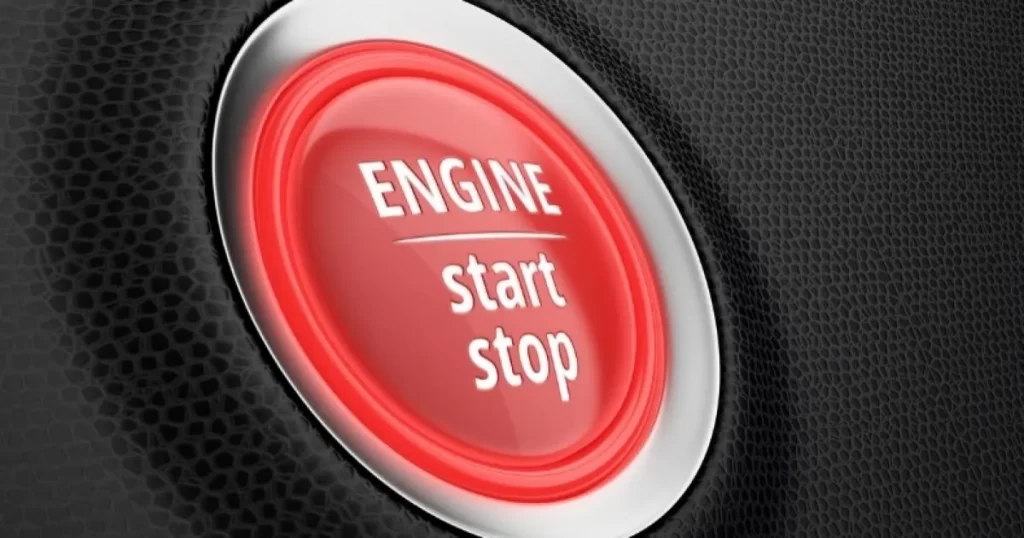
There are several other benefits to using this technology, aside from saving fuel while stuck in traffic.
Fuel savings
Stop-start systems save fuel, which is the most obvious benefit. When you stop at a stop sign or red light, the engine automatically shuts off, which can save you 15 percent on fuel.
While the savings may not be so dramatic at higher speeds where you won’t be stopped for long periods of time, they still aid in reducing emissions and extending range.
Save on maintenance & emissions
Additionally, an engine stop-start system reduces fuel consumption and creates a more environmentally friendly vehicle.
In order to achieve better air quality around cities, it is important to turn off your vehicle’s engine at brief stops rather than leaving the engine running continuously.
Furthermore, since the parts necessary to start an engine (like spark plugs) wear out less, reducing them can potentially save you on maintenance costs.
Enhanced safety measures
In the event that an accident occurs during sudden stops and starts, this technology can also be beneficial for safety measures.
By preventing fuel tanks from catching fire from nearby ignition sources during collisions involving motor vehicles, potentially dangerous situations can be avoided, such as fires or explosions.
Enhance vehicle comfort
You can reduce noise levels inside your car by shutting down the motor when it’s not necessary, making it easier for passengers to nap stationary without having to hear loud noises every now and then while driving in crowded areas.
It is possible to feel this impact when a vehicle sits idle for at least thirty seconds. Despite this, drivers who need occasional brief breaks in traffic (e.g. emergency services vehicles) will still have sufficient time.
Longer vehicle life
Your car’s spark plugs or pistons wear out over time when it stops and starts frequently while driving.
Nevertheless, stop-start systems eliminate wear and tear that can occur due to frequent stopping and starting, resulting in a longer engine life.
Read: Where Are The Chevy Truck Ground Locations
Read: Smoke Coming Out Of Car Vents
Frequently Asked Questions
Is the “A” in a circle a universal symbol in all cars?
It depends on the car manufacturer whether the “A” is used in a circle.
Does the symbol have a standardized meaning?
It depends on the brand and context whether there is a common interpretation or not.
Are there any legal requirements for using symbols in cars?
The automotive industry has regulations in place to ensure the use of symbols is safe and compliant.
How has the symbol evolved in the age of electric vehicles?
Digitized dashboards of electric vehicles often display the symbol in a different way.
Can the “A” in a circle be customized by car owners?
Usually, car owners cannot easily customize the symbol since it is part of the standardized design.
Conclusion
The basic workings of modern technology, such as Engine Start/Stop, may not seem obvious to the average person, but they are essential for understanding how they work.
In order to maximize their benefits and avoid any unexpected surprises while driving, they should be able to be manually activated or deactivated according to personal preferences.
The next time you get into your car, keep your eyes open for that A symbol!

